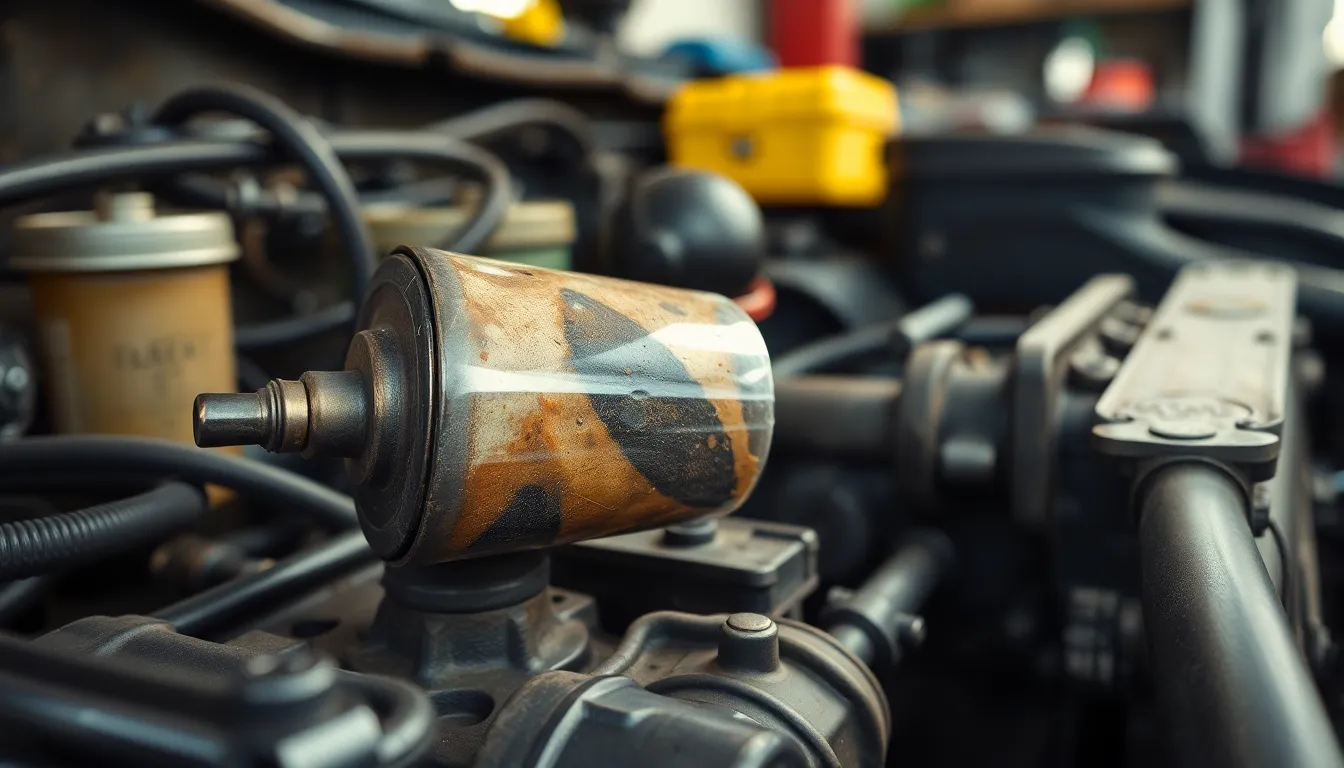Table of Contents
ToggleImagine this: you hop into your car, turn the key, and it roars to life—only to sputter and die like a toddler throwing a tantrum. Frustrating, right? This common automotive drama leaves many scratching their heads and pondering their fate as car owners.
When a vehicle starts but then decides to take an unscheduled nap, it can feel like a cruel joke. But fear not! Understanding the reasons behind this behavior can save drivers both time and money. From fuel issues to electrical gremlins, uncovering the culprit behind your car’s rebellious streak is the first step toward a smooth ride. Buckle up as we dive into the mystery of sputtering engines and discover how to get your car back on the road without breaking a sweat.
Understanding the Problem
Experiencing a car that starts then sputters and shuts off creates confusion. Recognizing symptoms and potential causes helps car owners tackle this frustrating issue effectively.
Common Symptoms
Common symptoms include engine sputtering, rough idling, and sudden stalling. These signs often indicate underlying problems. Drivers may notice strange noises or decreased power while accelerating. Flickering dashboard lights might signal electrical issues. Frequent struggles to restart the engine can also occur. Observing these symptoms quickly aids in identifying the problem earlier.
Possible Causes
Possible causes range from fuel delivery problems to ignition failures. Clogged fuel filters restrict fuel flow. Contaminated fuel can disrupt engine performance as well. Faulty spark plugs prevent proper combustion, resulting in engine sputtering. Vacuum leaks can lead to an incorrect air-fuel mix, causing the car to stall. Electrical system issues might affect battery power or alternator functionality. Analyzing these factors paves the way toward effective solutions.
Fuel System Issues

Fuel system problems can lead to a car starting briefly before sputtering and shutting off. Identifying these issues helps address the underlying causes effectively.
Clogged Fuel Filter
A clogged fuel filter restricts fuel flow to the engine. When this happens, the engine may sputter due to inadequate fuel supply. Many car owners overlook this critical component. Replacing the filter regularly maintains optimal performance. Signs of a clogged fuel filter include poor acceleration and reduced engine power. Cleaning or replacing it often resolves these symptoms.
Failing Fuel Pump
A failing fuel pump disrupts fuel delivery, causing the engine to stall. This component is essential for maintaining consistent fuel pressure. When the fuel pump malfunctions, the engine may start but struggle to run properly. Symptoms of a failing pump include whining noises from the fuel tank and difficulty starting the vehicle. Addressing fuel pump issues promptly ensures reliable engine operation. Checking the pump’s functionality can lead to a quicker resolution of the starting and stalling problem.
Ignition System Problems
Ignition system issues can lead to frustrating car performance problems, including sputtering and stalling. Understanding specific components helps diagnose the situation effectively.
Bad Spark Plugs
Bad spark plugs create firing issues, resulting in engine sputtering. Spark plugs produce the necessary spark for fuel ignition in the combustion chamber. When they degrade, weak or inconsistent sparks occur. This inconsistency leads to rough idling and unexpected stalling. Signs of bad spark plugs include difficulty starting the engine and poor fuel efficiency. It’s critical to check spark plugs regularly and replace them every 30,000 to 100,000 miles, depending on the type. Keeping spark plugs in good condition ensures reliable engine function.
Ignition Coil Failure
Ignition coil failure can prevent a vehicle from starting smoothly. Ignition coils are responsible for converting battery voltage into a high-voltage spark that ignites fuel. When coils fail, they disrupt this process, leading to engine sputtering and stalling. Common indicators include misfires and a check engine light. Testing ignition coils with a multimeter helps assess their condition, while replacement can restore optimal engine performance. It’s advisable to replace faulty coils as soon as possible to avoid further issues down the line.
Air Intake and Exhaust Problems
Air intake and exhaust issues often contribute to a vehicle that starts, sputters, and stalls frequently. Identifying these problems can significantly improve engine performance.
Dirty Air Filter
A dirty air filter restricts airflow to the engine. This restriction causes the engine to struggle while trying to maintain proper air-fuel mixture, leading to sputtering and stalling. Regularly checking and replacing the air filter ensures adequate airflow. It’s recommended to replace the air filter every 15,000 to 30,000 miles, depending on driving conditions. Keeping this component clean is vital for optimal engine efficiency.
Blocked Exhaust System
A blocked exhaust system creates back pressure that disrupts the engine’s performance. Such blockages prevent exhaust gases from escaping, resulting in lost power and stalling. Signs of a blocked exhaust include decreased acceleration and unusual noises. Regular inspections of the exhaust system can catch issues before they escalate. Cleaning or replacing affected parts helps maintain proper engine function and prevent sputtering incidents.
Electrical System Failures
Electrical system failures often lead to issues that cause a car to start, sputter, and shut off unexpectedly. Identifying problems in this area can resolve many frustrating situations.
Weak Battery
A weak battery offers insufficient power to start the engine or operate electrical components effectively. Symptoms may include dim dashboard lights or slow cranking during start-up. Car owners should test the battery’s voltage, aiming for about 12.6 volts when fully charged. Routine checks every six months can help avoid sudden failures. Replacement is necessary if the battery shows signs of age after three to five years. Proper maintenance ensures consistent performance.
Faulty Alternator
A faulty alternator fails to charge the battery effectively, leading to power shortages for essential vehicle systems. Dimming lights, weird noises, or an illuminated battery warning light indicate potential alternator problems. Testing the alternator’s output should confirm whether it generates between 13.5 to 14.5 volts when the engine runs. Recommendations suggest checking the alternator every 40,000 to 70,000 miles. If issues arise, early replacement prevents engine stalling and enhances reliability.
Experiencing a car that starts then sputters and shuts off can be incredibly frustrating. By identifying the symptoms and understanding the potential causes, car owners can take proactive steps to address the issue. Regular maintenance is crucial in preventing problems related to fuel delivery, ignition systems, and electrical components.
By staying vigilant and addressing any signs of trouble early on, drivers can ensure their vehicles remain reliable and safe. Whether it’s replacing a clogged fuel filter or checking the battery, taking these steps can lead to smoother rides and peace of mind.






